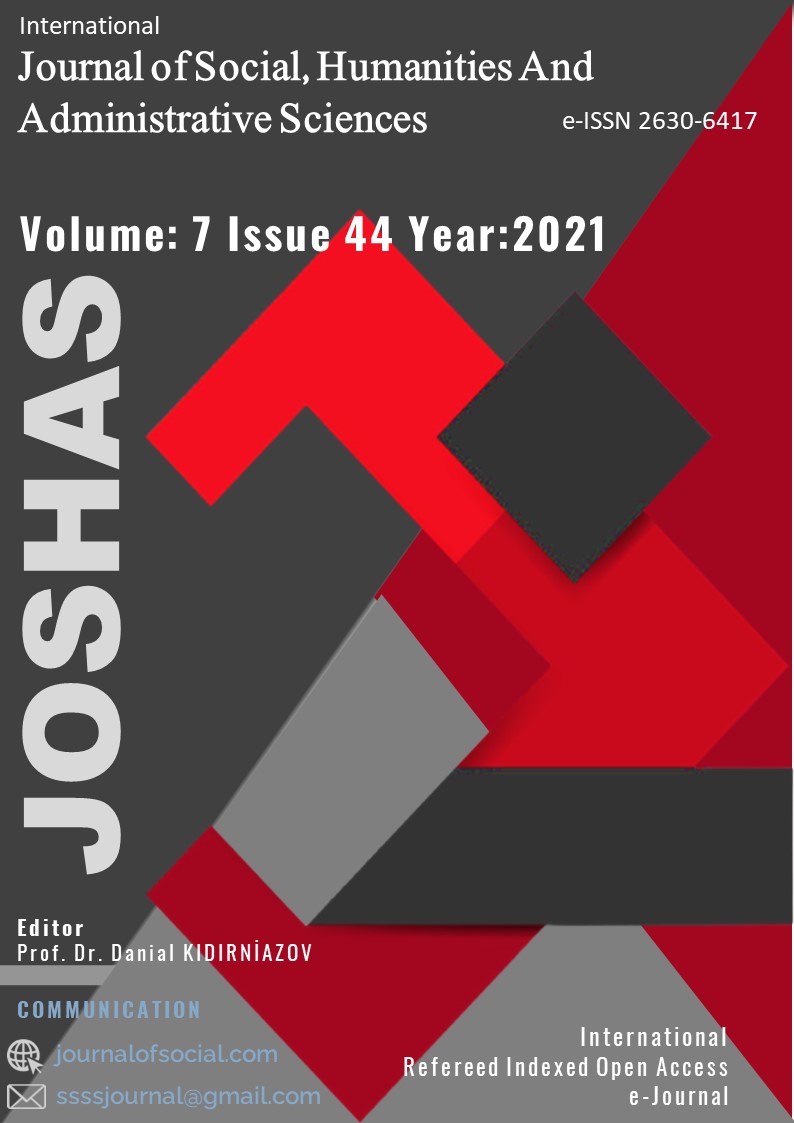RAUF YEKTA KOLEKSİYONU MERAGİ’NİN MAKASID’I, HANGİ VERSİYONDUR? İKİ MAKASIDU’L-ELHAN’IN KARŞILAŞTIRMASI
Author :
Abstract
Darülelhan’ın muallimlerinden Rauf Yekta’nın Türk müzikolojisinde iki önemli eksiğin olduğunu fark etmişti. Birincisi müzik nazariyatı, ikincisi ise bilimsel gerçekler üzerine kurulu bir biyografiler serisiydi. Bunu ilk fark ettiğinde Darülelhan henüz kurulmamıştı. Üzerinde çalıştığı biyografi serisinin ikinci kitabı Meragi idi. Bir taraftan onun hayatını yazarken, diğer taraftan eserlerini tercüme etmeğe çalışıyordu. Meragi’nin Makasıd adlı eserinin ayrıca bir yazmasına sahipti. Fakat bu güne kadar ne onun tercümesi yayınlandı ne de kitap koleksiyonundaki Makasıd nüshası ortada yok. Makasıd üzerine çalışanlar ise Makasıd nüshaları arasında metin farkları olduğu üzerinde durmadılar ve bu problemi çözmeye çalışmadılar. Oysa bu metin farkları hangi Makasıd metninin gerçek Makasıd olabileceği problemini ortaya çıkarıyordu. Bu problem üzerinde bugüne kadar durulmamış ve yapılan araştırmalarda hangi Makasıd’ın gerçek metin olabileceği sorusuna cevap aranmamıştır. Bu makalede Meragi’nin Makasıd adını verdiği iki nüsha kaynak olarak kullanılmıştır. Yaklaşık 20 yıl arayla yazılmış olan iki Makasıd nüshası tanıtıldıktan sonra aralarındaki benzerlikler ve benzersizlikler bulguları ortaya konmuştur. Böylece Makasıd’ın ilk yazması ile daha sonra hayatının sonlarında yazılan metinler arasında önemli metin farkları olduğu bulundu. Sonuçta elde iki farklı metin komposizyonuna sahip Makasıd olduğu gerçeği ortaya konulmuştur. Bu makalenin aydınlattığı diğer problem, hayatta iken yazılan son Makasıd’ın yazarın amacına uygun tasarlanmış ve yazılmış son Makasıd metni olabileceğini göstermektedir
Keywords
Abstract
He noticed that Rauf Yekta, one of the teachers of Darülelhan, had two important shortcomings in Turkish musicology. The first was the theory of music, and the second was a series of biographies based on scientific facts. When he first realized this, the Darülelhan school had not yet been established. The second book in the biography series he was working on was Meragi. While he was writing the life of Meragi on the one hand, he was trying to translate his works on the other. He also had a manuscript of Meragi's Makasıd. However, to this day, neither his translation has been published nor the copy of Makasıd in the book collection. Those working on Makasid, on the other hand, did not dwell on the text differences between the copies of Makasid and did not try to solve this problem. However, these text differences brought up the problem of which Makasid text could be the real Makasid. This problem has not been focused on until today and the researches have not sought an answer to the question of which Makasıd can be the real text. In this article, two copies named Makasıd by Meragi were used as sources. After the two Makasid copies, which were written approximately 20 years apart, were introduced, the similarities and uniqueness findings between them were revealed. Thus, it was found that there were significant textual differences between Makasıd's first manuscript and those written later in his life. As a result, the fact that there is Makasid with two different text compositions has been revealed. The other problem that this article clarifies is that the last Makasid written while alive may be the last Makasid text designed and written in accordance with the author's purpose.
Keywords
- Arpad, E. (1974). “Abdülkadir Meragi”, Küçük-Türk İslam Ansiklopedisi. İstanbul: Milli Eğitim Bakanlığı
- Arpad, E. (1974). “Abdülkadir Meragi”, Küçük-Türk İslam Ansiklopedisi. İstanbul: Milli Eğitim Bakanlığı yay.
- Bardakçı, M. (1986). Maragalı Abdülkadir. İstanbul: Pan yay.
- Biniş, T. (nşr.) (1977). Makasıdul-elhan, Tahran: Büngah-ı Terceme ve neşr yay. Gerçekte bu eserin adı Muhtasar-ı Makasıd olmalı.
- Ethe, H. (1980). Catalog of persian mss in the india Office library, London: India Office Library yay.
- Farmer, H.G. (1960). “Abd al-kadir b. Ghaybi”. Encyclopedia of Islam (İng.), Leiden: E.J.Brill yay., I, 66
- Meragi (2007). Camiü’l-elhan. haz.T.Biniş, Tahran: Müessese-i mütalaat yay.; haz.Sezikli, doktora tezi, MÜ SBE
- Meragi (1418). Muhtasar-ı Makasıd der ilm-i musiki. Meşhed Rızavi nüshası, 1418 tarihli ithafsız, bk. Biniş 1977.
- Muğam Ensiklopediyasi, Baku 2008
- Özcan, N.-Ersoy Ç, Şeyma, Türk Müziği Bibliyografyası, Ankara: Gece yay. Öztuna, Y.(1987), Abdülkaadir Meraği, Ankara: Kültür Bakanlığı yay.
- Rauf Yekta (2001). Esatiz-i Elhan: Hace Abdülkadir Meragi, İstanbul 1318 (1900)’den haz. Yüksel, Halilİbrahim (2001). Rauf Yekta Bey’in Esatiz-i Elhan adlı Eseri ve İncelenmesi. Yüksek lisans tezi, Ege Üniversitesi SBE
- Shiloah, A.(1979). The Theory of Music in Arabic Writings, Munih: G.Henle Verlag yay.
- Tetik-Işık, Seher ve R. Uslu (2013). Music Bibliography Foreign Publics: Muzik Bibliyografyası Yabancı Yayınlar. İstanbul: Pan Yay.
- Uslu, R.(2015b). “Ünlü Müzisyen Abdülkadir Meragi Hakkında Yeni Bulgular”. Rast Müzikoloji. 3(1): 32-41Uslu, R. (2015a). Meragi’den II. Murad’a Müziğin Maksatları Makasıdül-elhan. Ankara: Atatürk Kültür Merkezi yay.
- Uslu, R. (2019). “The Makasid Al-Alhan Versions Of Meragi Or The Books May Be Renamed? Meragi between Timurid Shah Rukh And Ottoman Murad”. Yegah Musiki dergisi,2(1): 21-40
- Uslu, R. (2015c), “Yüz yıldır aranan Meragi’nin Müzikler Hazinesi (Kenzü’l-Elhan) adlı eseri bulundu mu?”. musikidergisi.com. Online Er.Tar.06.04.2015
- Uslu, R. (2016). Music Bibliography -1 Books and Manuscripts, İstanbul: Çengi yay.
- Uslu, R. (2018a). “Meragi ve Makasıd Felsefesi”, Current Academic Studies in Fine Arts, ed. M. Yılmaz, Ankara: Gece kitaplığı yay., s. 115-123
- Uslu, R. (2018b). Meragi’nin Son Müzik Eseri Zevaid-i Fevaid-i Aşere. Ankara: Atatürk Kültür Merkezi yay.





